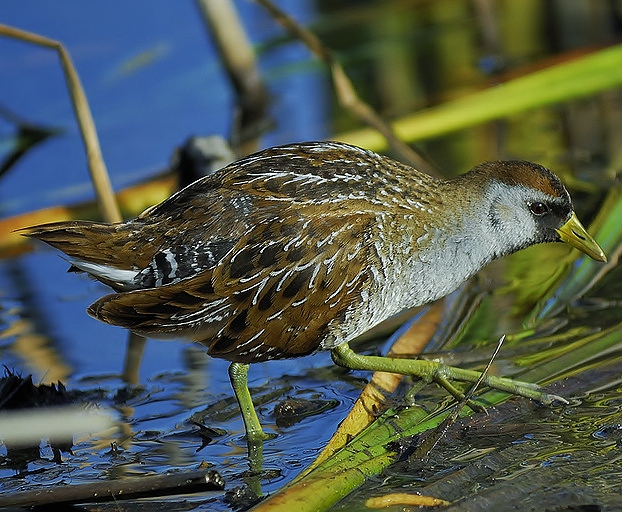 |
| Photo by Joseph Kennedy (Science Blogs) |
Common name:
sora (en); franga-d’água-americana (pt); marouette de Caroline (fr); polluela sora (es); Carolinasumpfhuhn (de)
Taxonomy:
Order Gruiformes
Family Rallidae
Range:
This species is found throughout most of North America, breeding from south-eastern Alaska to Newfoundland and south to California, Arizona, New Mexico and northern Mexico. Some population migrate south to winter from Mexico, through Central America and into Colombia, Venezuela and Ecuador.
Size:
These birds are 18-25 cm long and have a wingspan of 30-32 cm. They weigh 50-110 g.
Habitat:
Soras are found in freshwater marshes, flooded fields and swamps with plenty of vegetation for cover. During the winter they also use saltmarshes.
Diet:
They eat various invertebrates, including snails, crustaceans, spiders, and insects, namely beetles, grasshoppers, flies and dragonflies. To some extent they also eat the seeds of various plants, including wild rice Zizania aquatica, crowngrass Paspalum, rice Oryza sativa, spikerushes Eleocharis, duckweeds, pondweeds Potamogeton, panicgrasses Panicum, cordgrasses Spartina, saltgrass Distichlis spicata, hairy crabgrass Digitaria sanguinalis, and bristlegrass Setaria.
Breeding:
Soras breed in April-August. The female builds the nest, a shallow basket made of dead emergent wetland vegetation, attaches to stalks of dense vegetation and placed over or adjacent to water. There she lays 8-13 brown eggs with brown spots, which are incubation by both sexes for 18-20 days. The chicks leave the nest within 24 hours of hatching, but only become independent 4 weeks later. Each pair raises a single brood per season.
Conservation:
IUCN status – LC (Least concern)
This species has a very large breeding range and the overall population trend is increasing, although some populations are stable.







